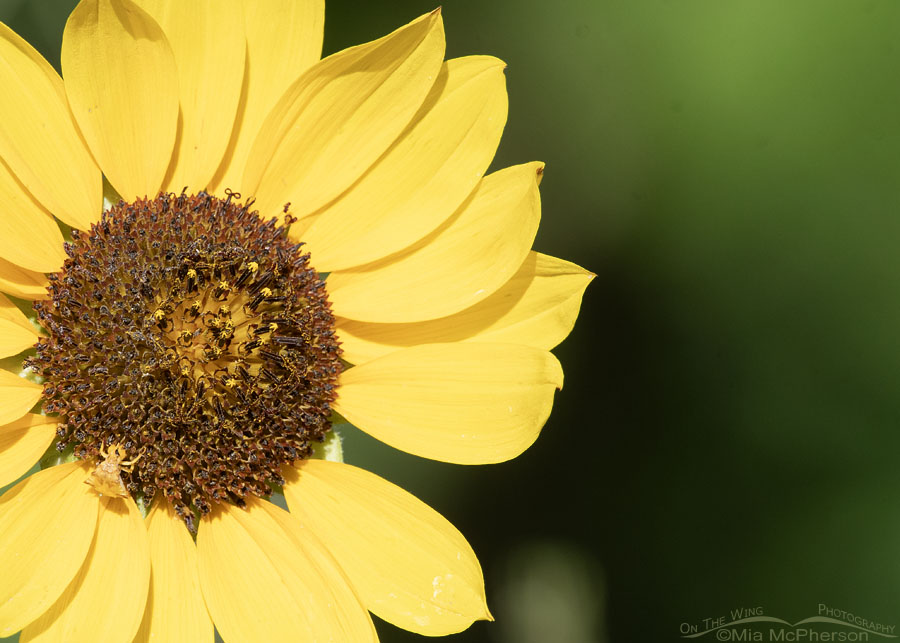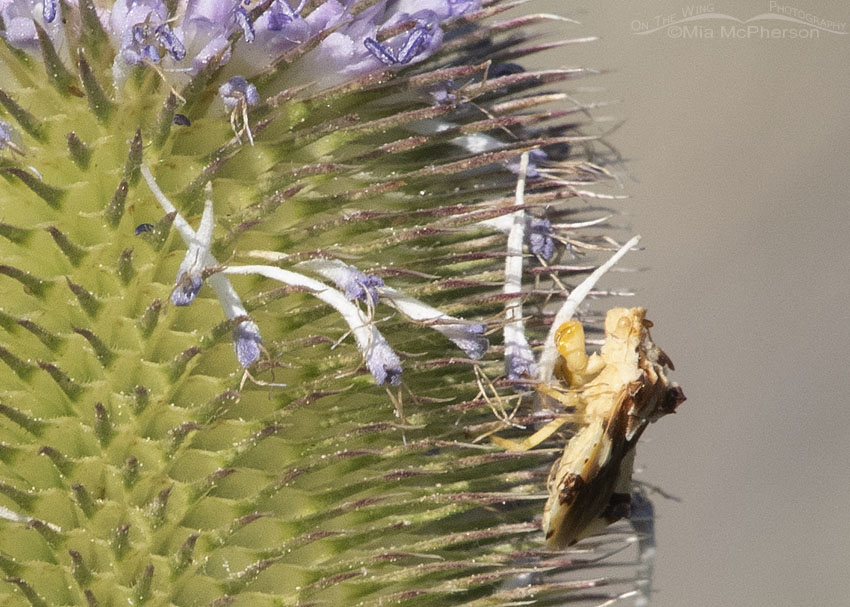On my last trip to Farmington Bay WMA, I stopped to photograph wild Common Sunflowers near the nature center and spotted a Jagged Ambush Bug on one of them.
 Jagged Ambush Bug on a Common Sunflower – Nikon D500, f10, 1/800, ISO 500, Nikkor 500mm VR with 1.4x TC, natural light
Jagged Ambush Bug on a Common Sunflower – Nikon D500, f10, 1/800, ISO 500, Nikkor 500mm VR with 1.4x TC, natural light
I have photographed other Jagged Ambush Bugs so I knew immediately what it was. Ambush Bugs have great camouflage. The Jagged Ambush Bug in this image is at about 7 o’clock on the sunflower.
Ambush bugs lay in wait for their prey thus their common name. Ambush bugs can capture prey ten times their size. They consume butterflies, moths, bees, and flies. In ambush bugs the females are larger and they capture larger prey.
These bugs have evolved to look like parts of the plants they inhabit, which helps them remain hidden from both prey and potential predators. Their jagged appearance resembles the texture of flower stems or twigs, making them almost invisible to the untrained eye.
 Jagged Ambush Bug on a Teasel – Nikon D500, f10, 1/1000, ISO 500, Nikkor 500mm VR with 1.4x TC, natural light
Jagged Ambush Bug on a Teasel – Nikon D500, f10, 1/1000, ISO 500, Nikkor 500mm VR with 1.4x TC, natural light
Personally, I think ambush bugs look like tiny alien creatures. I wanted to add this tighter crop of another Jagged Ambush Bug I photographed in Box Elder County, Utah on a teasel in July of 2018 to show more details.
Jagged Ambush Bugs are a testament to nature’s adaptability and the remarkable diversity of predatory insects. Their camouflage, hunting techniques, and mating behaviors make them a captivating subject for entomologists and nature enthusiasts alike.
I can always find something to photograph and focus on in the field, even when there aren’t any birds nearby. Birds are my first passion, but everything else I find in nature runs a very close second.
Life is good.
Mia
Click here to see more of my insect and spider photos. Click here to see more of my flower, shrub and tree photos.


These bugs are new to me as well. It is a testament to your incredible vision that you were able to spot the Ambush Bug on the sunflower. You never cease to amaze me. Thanks Mia.
I of course focused on the flower and didn’t see the ambush bug until I read your article. I never have seen one of these bugs before
Serendipity at play. I only learned of ambush bugs yesterday – and this morning you show me one. Thank you.
Fascinating bug and love the hawk against the sunflowers!—Jeri